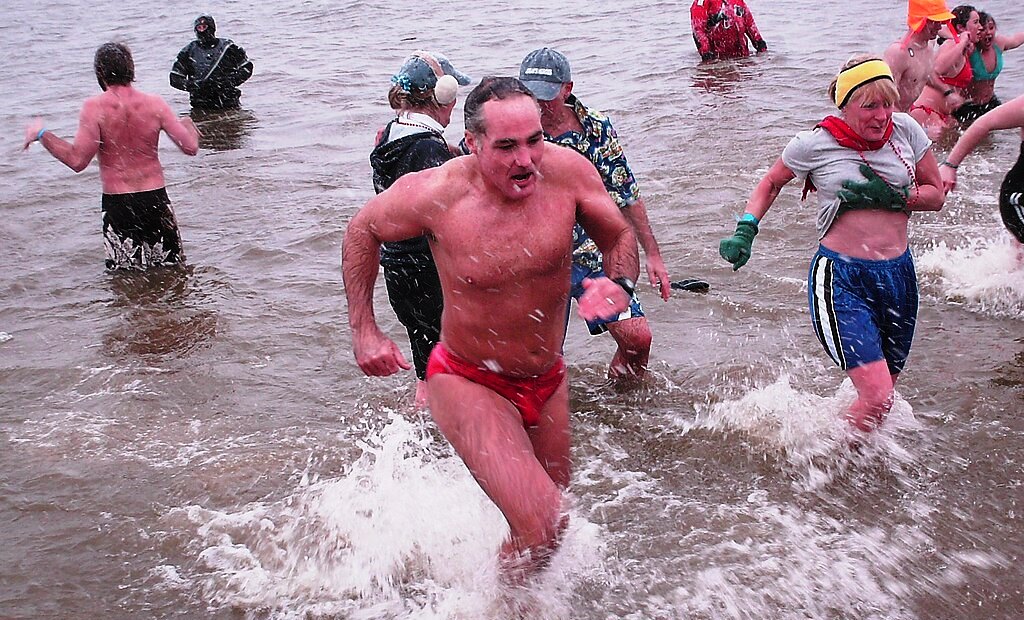Andrew Gallagher and Mark Kluwer
Cold exposure, once a survival challenge, is now being embraced as a tool for enhancing health and resilience. From ice baths to cryotherapy, the practise of deliberately subjecting the body to cold has gained popularity among athletes, biohackers and wellness enthusiasts. However, what does the science say about the physiological mechanisms underlying the proven health benefits? And are there any downsides to this health trend? This article explores the evidence to help readers decide whether cold exposure is right for them.
The Body’s Response to Cold: A Symphony of Adaptation
When the body is exposed to cold, it initiates a cascade of physiological responses aimed at preserving core temperature and maintaining homeostasis (the body’s internal systemic balance). These responses include both the immediate response and adaptive changes over time.
Vasoconstriction and Blood flow Distribution: The first line of defence against cold is vasoconstriction, the narrowing of blood vessels in the skin and extremities. This reduces heat loss by redirecting blood flow to the core, protecting vital organs. When rewarming happens, these blood vessels dilate flushing the extremities with oxygenated blood and aiding the removal of metabolic waste.
Thermogenesis and Brown Fat Activation: Cold exposure stimulates non-shivering thermogenesis (heat generation) primarily through the activation of brown adipose tissue. Unlike white fat, which stores energy, brown fat burns calories to produce heat.
Hormetic Stress and Cellular Resilience: Cold exposure is a form of hormetic stress, a mild beneficial stressor that triggers adaptive responses, such as the way that exercise induces muscle repair and growth. Cold exposure enhances cellular resilience. A 2025 study from the University of Ottawa found that repeated cold water immersion significantly improved autophagic function, the process by which cells break down and recycle damaged components reducing the markers of cellular damage.
Neuroendocrine Activation: Cold exposure activates the sympathetic system leading to the release of adrenalin and cortisol. These hormones enhance alertness, focus and mood while mobilising energy stores and modulating inflammation.
Evidence Based Health Benefits of Cold Exposure
While the physiological mechanisms are fascinating ,what really drives interest in cold exposure are its potential health benefits. Here is what the current research reveals:
Improved Metabolic Health: Cold exposure increases energy expenditure by activating brown fat enhancing thermogenesis. This can lead to improved insulin sensitivity and glucose metabolism, making it a potential adjunct therapy for metabolic disorders such as Type 2 diabetes.
Reduced Inflammation and Enhanced Recovery: Cold therapy is widely used in sports medicine to reduce inflammation, muscle soreness and swelling. It works by constricting blood vessels and slowing down cellular metabolism which helps limit tissue damage. In addition to this effect, cold therapy has been shown to reduce the inflammatory response that occurs after intense physical activity, aiding recovery.
Boosted Immune Function: Regular cold exposure may enhance immune surveillance. Some studies suggest that it increases the activity of natural killer cells, which plays a crucial role in defending against infections and cancer. Anecdotal evidence supports fewer colds and flu episodes among regular cold plungers.
Mental Health and Mood Enhancement: Cold exposure has been shown to increase levels of endorphins and dopamine neurotransmitters associated with pleasure and wellbeing. Participants in cold immersion studies report feeling more alert energised and uplifted after just a few minutes in cold water. This has led to interest in cold therapy as a complementary treatment for depression and anxiety.
Longevity and Cellular Health: The University of Ottawa study found that cold therapy enhances autophagy (the removal of damaged cellular components). By promoting the removal of damaged cellular components and improving stress tolerance, cold exposure may help delay the onset of age related diseases.
Getting Started: Tips for Safe Practice
How to Start: Start with cold showers. Begin with 30 seconds of cold water at the end of a warm shower and gradually increase the duration. Once you have built up your tolerance, try cold plunges. Use a tub of cold water or natural body of water at 15-20°C. Start with 1-2 minutes and build up to 5-10 minutes.
Safety Considerations
Consult your doctor if you have cardiovascular issues, Raynaud’s disease, are pregnant, or have respiratory conditions.
Always warm up slowly afterward to avoid hypothermia. Use gentle movement and warm clothing.
Never practice cold exposure alone, especially in open water without supervision. Supervision is essential to prevent cold shock or loss of consciousness.
Avoid hyperventilating before cold plunges. It can increase the risk of blackout, particularly in water.
Listen to your body. Shivering is normal; numbness, confusion, or loss of coordination are signs to stop immediately.
Conclusion
Cold exposure is more than a wellness trend -it is a scientifically supported practice that taps into ancient survival mechanisms to promote modern health. From enhancing metabolic function and immune resilience to improving mood and cellular longevity, the benefits are broad and compelling. As research continues to uncover molecular pathways involved, cold therapy may become a cornerstone of preventative health and performance optimisation.
Whether you’re plunging into an icy lake or finishing your shower with a cold blast you’re not just braving the chill – you’re activating a powerful biological toolkit designed to make you stronger, healthier and more resilient.
Andrew Gallagher is a physiotherapist at Springs Medical in Daylesford.
Mark Kluwer is a Cold Exposure Workshop Facilitator in Elevated Plains.





